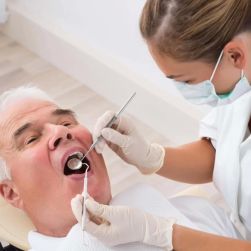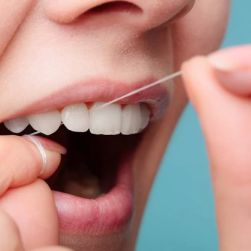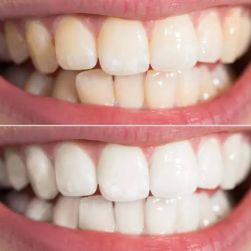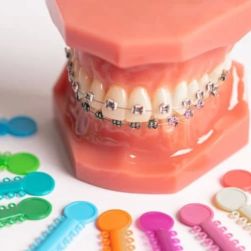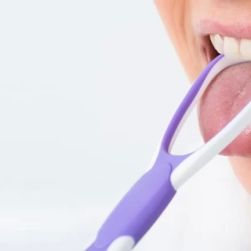Discover the Future of Dental Care with Laser Dentistry
As someone who’s always been a bit apprehensive about dental visits, I can honestly say that laser dentistry has completely changed the way I look at dental treatments. I used to dread the sound of the drill and the discomfort that often followed, but once I experienced laser dentistry for the first time, my perspective shifted entirely. In this article, I’ll share everything you need to know about laser dentistry and how it can benefit your oral health, making visits to the dentist more comfortable, effective, and efficient.
1. What is Laser Dentistry?
Laser dentistry is a modern, minimally invasive dental technique that uses focused light energy to treat various dental conditions. The word "laser" stands for "Light Amplification by Stimulated Emission of Radiation," and this technology has been adapted for use in a variety of dental procedures. Instead of using traditional dental tools like drills and scalpels, laser dentistry relies on lasers to remove or reshape tissues, disinfect areas, and perform dental work with precision.
I had my first experience with laser dentistry when I went in for a cavity filling. I was surprised to find out that instead of the typical drilling, my dentist used a laser to target the decayed area. The process was quick, and there was no discomfort during the procedure. I was amazed at how much less invasive it felt compared to what I was used to. Laser dentistry can be used for various treatments, including fillings, gum disease treatment, teeth whitening, and even biopsy procedures.
2. The Benefits of Laser Dentistry
Laser dentistry has become incredibly popular due to its many benefits, which I can personally attest to. Here are some of the top advantages:
Less Pain and Discomfort
One of the most significant advantages of laser dentistry is that it reduces the pain and discomfort commonly associated with traditional dental treatments. Many patients, like me, are sensitive to the vibrations of the dental drill or the sensation of numbness caused by anesthesia. With lasers, the need for anesthesia is often minimal, and some procedures don’t require any numbing agents at all. For example, I’ve had a laser gum treatment that was practically painless, and I didn’t need any numbing shots beforehand.
Additionally, the precision of lasers minimizes the amount of healthy tissue that is affected, which further reduces pain. After my laser cavity filling, I didn’t experience the usual soreness or discomfort that often comes with traditional fillings. This was a game-changer for me!
Faster Recovery Time
Recovery time is another area where laser dentistry shines. Unlike traditional dental procedures, which can involve bleeding and swelling, laser treatments are more precise, which leads to faster healing. In fact, the laser's energy helps promote the growth of healthy tissue, which accelerates the healing process. After my laser procedure, I was able to go about my day without any swelling or bleeding, and the discomfort was minimal, which was a pleasant surprise.
In addition, the risk of infection is greatly reduced with laser dentistry. The laser sterilizes the area as it works, killing bacteria and germs that could lead to complications. This means less risk of post-procedure infections and a quicker overall recovery time, which I’ve personally experienced.
Minimal Bleeding and Swelling
When my dentist used the laser for a gum treatment, I was amazed at how little bleeding occurred. With traditional methods, the gums would often bleed quite a bit during and after the procedure. However, lasers are designed to cauterize the tissue as they cut, sealing blood vessels and minimizing bleeding. This also reduces swelling, which is often a concern after dental treatments. I didn’t experience the usual swelling around my gums, which made the recovery process so much easier.
3. Common Dental Procedures That Use Lasers
Laser dentistry isn’t just for cavity fillings—it can be used for a wide range of dental procedures. Some of the most common laser dental treatments include:
Cavity Treatment
Lasers can be used to remove decay from a cavity and prepare the tooth for a filling. The process is typically less invasive than traditional methods and doesn’t require the use of a drill, which makes it much more comfortable. I’ve had this procedure done, and I can honestly say it was a much smoother experience compared to traditional fillings.
Gum Disease Treatment
Laser technology is also used to treat gum disease. I’ve witnessed the effectiveness of laser treatment for gum disease first-hand. The laser helps remove infected tissue from the gums while preserving healthy tissue. The laser’s precision allows for effective treatment of gum pockets and reduces the need for surgical intervention. The recovery time is significantly reduced compared to traditional gum surgeries, and I didn’t experience the usual pain and discomfort associated with gum treatments.
Teeth Whitening
Lasers are also used in teeth whitening treatments. The laser activates the whitening gel applied to the teeth, accelerating the bleaching process and producing noticeable results in a short amount of time. I tried this at my local dental clinic, and the results were amazing! My teeth looked several shades lighter after just one session, and the process was completely painless.
Biopsy and Lesion Removal
Laser dentistry can be used for oral biopsies and the removal of lesions or abnormal growths in the mouth. This type of procedure is typically quick and has minimal discomfort, as the laser cauterizes the tissue as it works, reducing the risk of infection and excessive bleeding.
4. Is Laser Dentistry Right for You?
As I discovered, laser dentistry is a fantastic option for those who want to minimize pain, reduce recovery time, and enjoy more comfortable dental visits. It’s especially ideal for patients with dental anxiety, as the procedures are often quicker and less invasive than traditional methods. However, not all dental conditions can be treated with lasers, so it’s important to consult with your dentist to see if laser dentistry is right for your specific needs.
If you’re considering laser dental treatment, I highly recommend discussing the options with your dentist. They can explain how laser dentistry might benefit you based on your oral health and treatment needs. In my experience, it’s worth exploring, and I’ve never looked back!

